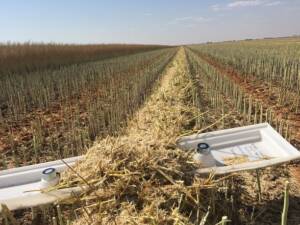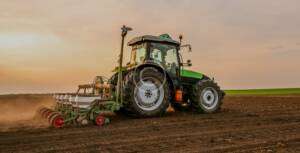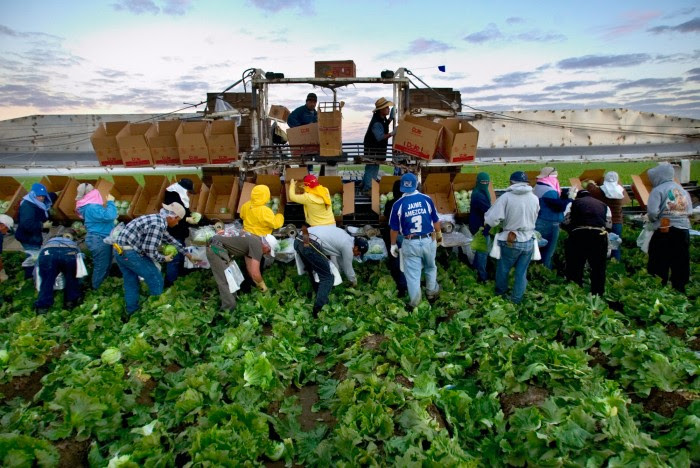What is harvesting?
Harvesting is the process of removing the crop from the fields. Smallholder farmers often harvest manually, using hand tools, including sickles, knives, scythes or cutters. Mechanized technologies exist that reduce harvest losses while conserving labor. Mechanical reapers have been developed for use on small plots, and mini-combines that simultaneously harvest and thresh grain are also available for some crops in some regions. Large combines dominate harvesting on large-scale farm operations.
The Issues of Finding Labor…
Farmers and ranchers struggle to find people willing to harvest and process the food that feeds the world.
The topic of labor in the agriculture industry and supply chain is nothing new. It just became abundantly apparent to those outside the industry during the pandemic.
Farmers and ranchers struggle to find people willing to harvest and process the food that feeds the world yearly. With the dwindling rural population and growing opportunities away from the farm, many farmers throughout the U.S. have turned to bring in labor from other countries through the H-2A temporary agricultural program.
The H-2A program allows farmers who meet specific regulatory requirements to bring non-immigrant workers to the U.S. to fill seasonal or temporary agricultural jobs when American labor is unavailable. A misconception about the program is that non-immigrant workers are illegal aliens and H-2A permits can lead to U.S. citizenship. The reality is that agricultural workers who enter the U.S. under the H-2A program are temporary, and the program does not lead to a permanent residence or U.S. citizenship.
To obtain H-2A visas, interested agricultural workers must submit an application. Then, after advertising for American labor, the farmer must also file an application, completing a tedious and costly process to bring foreign workers to their farms.
Agricultural labor has become one of the most pressing policy issues for the industry. Farmers and processing facilities have enough problems to face without having to worry about labor. That is why Farm Bureau is working with Congress to make sure sound immigration policy is enacted that will stop the flow of illegal immigration, while protecting the ability of U.S. farmers to recruit needed legal, temporary workers.
Having an obtainable and consistent labor force is vital to keeping farms producing at the highest levels, providing food and fiber, not only for U.S. consumers, but also for the rest of the world. That is why the question always comes back to this – would you rather import your food or your labor?
What causes postharvest loss?
Harvesting is the first step in the postharvest grain value chain and plays a role in determining overall crop quality. Harvest timing and methods dictate losses during this stage. Losses can be large if cereals are harvested before they are fully mature or when the moisture content is too high or too low. Excessively dry crops will be subject to breakage, while excessively wet crops will be subject to spoilage, among other things.
How significant are the harvest losses?
Harvest losses vary with technology, crop, and other factors. Harvest losses can be measured by gleaning cereals found in fields after harvest, but this is an incomplete measure as harvest practices can lead to breakage and other losses later in the value chain. Losses tend to be highest with manual harvesting and lowest with a combine. However, improper speed and field conditions can lead to high losses with combines. Harvest losses for rice have been estimated to range from 1 to 5% (Hodges, Buzby and Bennett, 2011). Estimated harvest losses for maize in Africa can be as high as 8% (NRI, https://postharvest.nri.org/scenarios/grains )
What does our research focus on? Pre and post-harvest losses and Labor.
The economics of Pre and post-harvest losses, Harvest-related research into post harvest loss often covers issues around mechanization and moisture content. Reducing post-harvest loss (PHL) allows farmers to keep more of their crop and increases grain supplies, which are critical in a world where resources are scarce and rural developing economies struggle. While the policy goal is well understood, the micro-economics of loss are not. Little research focuses on the role managers play in reducing loss.
To read related research articles, refer to the table below.
 Farm automation, often associated with “smart farming”, is the technology that makes farms more efficient and automates the crop or livestock production cycle. Many companies are working on robotics innovation to develop drones, autonomous tractors, robotic harvesters, and automatic watering and seeding robots. Although these technologies are relatively new, the industry has seen an increasing number of traditional agriculture companies adopt farm automation into their processes.
Farm automation, often associated with “smart farming”, is the technology that makes farms more efficient and automates the crop or livestock production cycle. Many companies are working on robotics innovation to develop drones, autonomous tractors, robotic harvesters, and automatic watering and seeding robots. Although these technologies are relatively new, the industry has seen an increasing number of traditional agriculture companies adopt farm automation into their processes.
- New advancements in technologies ranging from robotics and drones to computer vision software, have completely transformed modern agriculture.
- The primary goal of farm automation technology is to cover easier, mundane tasks. Some significant technologies most commonly utilized by farms include harvest automation, autonomous tractors, seeding and weeding, and drones.
- Farm automation technology addresses major issues like a rising global population, farm labor shortages, and changing consumer preferences.
- The benefits of automating traditional farming processes are monumental by tackling issues from consumer preferences, labor shortages, and the environmental footprint of farming.


